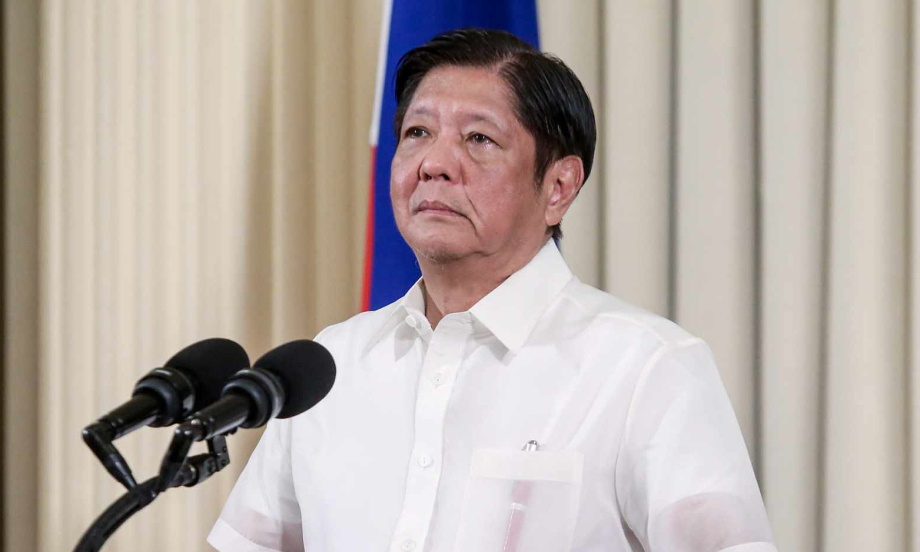MANILA, PHILIPPINES — It was supposed to be a day of reckoning. A “new revolution,” as Congressman Elpidio Barzaga boldly declared before cameras, microphones, and a sea of flashing headlines. But what happened next would go down not as a revolution, but as one of the most bizarre and embarrassing political spectacles in recent Philippine history.
In a scene that could only be described as delusional theater, Barzaga attempted to summon a “People Power” uprising against President Ferdinand “Bongbong” Marcos Jr. His words were loud, his gestures grand, his promises fiery: “We will enter Forbes Park. We will show them the power of the people!”
But as dusk fell over Makati, reality struck hard. The so-called revolution turned out to be a ghost rally — a smattering of confused followers, a handful of placards, and an army of bemused police officers and journalists who outnumbered the protesters themselves.
What was meant to be a symbol of defiance became a meme in minutes.
THE RALLY THAT WASN’T

In the days leading up to the rally, Barzaga flooded social media with cryptic teasers and fiery rhetoric. Rumors swirled that his movement was gaining momentum. Hashtags trended. Even fringe vloggers hyped it as “the spark that will burn Malacañang.”
But when the hour came, the supposed “crowd of thousands” turned out to be less than fifty. The streets of Forbes Park — the very area Barzaga had promised to “storm” — remained calm, guarded, and largely indifferent.
Videos soon circulated online, showing a visibly agitated Barzaga surrounded by a tiny group of followers chanting awkwardly in the dark. The footage became instant fodder for ridicule.
“Was this People Power or People Powder?” one netizen joked on X (formerly Twitter). Another captioned a clip, “When your revolution has fewer people than your birthday party.”
‘A MAN LOSING GRIP,’ COMMENTATOR CLAIMS
The viral moment quickly reached popular political commentators, including the outspoken host of Coach Jarret Live, who tore into Barzaga’s performance with surgical precision.
“This isn’t activism,” the commentator scoffed during a live broadcast. “This is insanity disguised as patriotism. You don’t call that People Power — you call that People Delusion.”
The commentator’s monologue was brutal. He accused Barzaga of exploiting the symbols of EDSA and the people’s struggle for his own ego-driven crusade. “He’s not leading a revolution,” he said. “He’s trolling the government. And badly.”
Jarret further suggested that Barzaga’s behavior could signal something deeper — either political desperation or a psychological break under pressure. “You don’t tell people to invade private property,” he said, referring to Barzaga’s bizarre challenge to “enter” the homes of wealthy officials in Forbes Park. “That’s not leadership. That’s a crime.”
A DANGEROUS GAME WITH REAL CONSEQUENCES

While the public laughed, analysts were less amused. Political scientist Dr. Maria Luisa Tolentino called the incident “deeply troubling.”
“When an elected lawmaker publicly incites trespassing and potential violence, even symbolically, it erodes democratic norms,” she explained. “It’s not only reckless; it creates unnecessary tension in an already polarized society.”
Indeed, many noted that Barzaga’s outburst wasn’t happening in a vacuum. Over the past year, Philippine politics has been rife with disinformation campaigns, ideological divisions, and renewed influence from foreign actors — particularly online networks suspected of pushing anti-government narratives.
Reuters recently reported that Chinese-linked “troll farms” had been amplifying polarizing content about the Marcos administration. Some analysts now speculate that Barzaga’s so-called “movement” may have been unintentionally fueled by such networks, turning a lone political stunt into an international talking point.
WHEN DELUSION MEETS DISINFORMATION
Coach Jarret seized on that point, warning viewers not to underestimate the digital machinery behind such spectacles.
“Barzaga might think he’s fighting corruption,” the commentator said, “but he’s playing straight into someone else’s game — maybe even Beijing’s.”
He claimed that online narratives portraying Barzaga as a “brave reformist” were artificially boosted by suspicious pages and accounts linked to disinformation hubs. “It’s psychological warfare,” he said. “They want chaos. And people like Barzaga make it easy.”
Social media analysts have long warned that viral political “moments” — especially those involving high emotion and spectacle — are fertile ground for manipulation. When mixed with genuine frustration among the population, they can blur the line between dissent and destabilization.
MARCOS: SILENT, BUT FIRMLY SEATED
Through it all, President Marcos has remained publicly silent. Sources inside Malacañang say the administration viewed Barzaga’s stunt as “self-destructive” and saw no need to respond officially.
“Why dignify it?” one Palace insider reportedly told journalists. “The people saw what happened. The President didn’t even need to lift a finger.”
Indeed, by the following morning, Barzaga’s “revolution” had evaporated — leaving behind only memes, headlines, and a lingering question: What drove a sitting congressman to this point?
A CAUTIONARY TALE
The fiasco of Barzaga’s failed uprising underscores a troubling trend in Philippine politics: the rise of spectacle over substance. In an era where attention is power, even humiliation can be spun into visibility.
But visibility is not victory.
Barzaga’s gamble — whether motivated by genuine conviction, delusion, or hidden agendas — has exposed more about the fragility of the political ecosystem than about Marcos himself. It showed how quickly disinformation, ego, and outrage can combine to produce chaos out of nothing.
For ordinary Filipinos watching from their screens, it was both tragic and absurd — a reminder that democracy is not a performance, and “People Power” cannot be conjured by hashtags or hollow theatrics.
In the end, as one commentator wryly concluded, “If this is the new revolution, then the revolution has truly died.”





